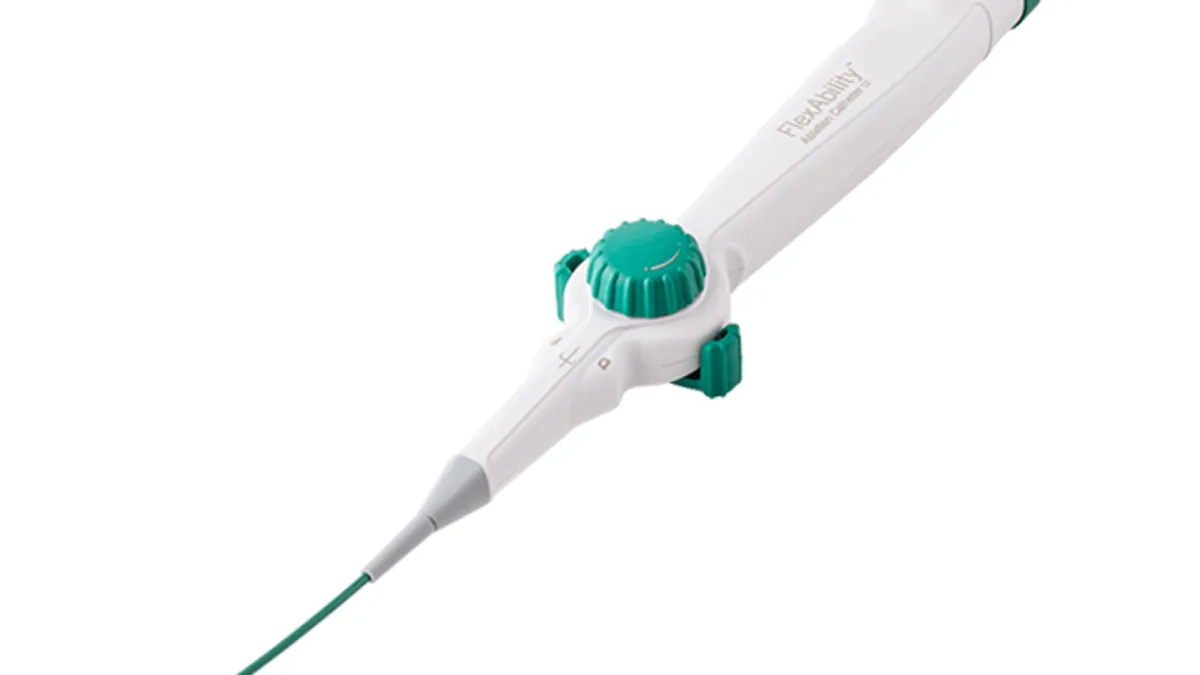Dive Brief:
- Pulsed field ablation (PFA) devices from Boston Scientific, Johnson & Johnson and Medtronic are a threat to Abbott’s $1.9 billion electrophysiology business, according to analysts at Stifel.
- Abbott is taking a “wait-and-see” approach to PFA, advancing a later generation device in the belief that the first wave of products will have shortcomings that limit adoption, the report said. The analysts see “some logic” to Abbott’s position but expect the company to suffer share losses in the coming years.
- The pressure could ramp up quickly, with the analysts warning products that make up around 90% of Abbott’s electrophysiology sales could be affected by the switch to PFA by 2025.
Dive Insight:
Abbott has a PFA device in development but it is years behind the front-runners, with first in-human use planned for this year. Based on that, the analysts estimate the device, named Volt, could win approval in the U.S. in 2027 or 2028.
By then, Abbott may have faced two waves of competing PFA devices. The analysts say they expect the first wave to start next year, when Boston Scientific’s Farapulse and Medtronic’s PulseSelect could both be available in the U.S. Ultimately, the analysts forecast the devices could capture the 60% of the atrial fibrillation market that is treated with just pulmonary vein isolation.
If the PFA devices start winning market share, “Medtronic's Cryoballoon ablation will face the most significant competitive pressures,” the analysts wrote, but Abbott “could also experience competitive share losses.” Abbott’s diagnostic catheters and mapping capital sales are potentially under threat.
Neither Farapulse nor PulseSelect use mapping, a process that is needed for most cryoballoon cases. The Abbott EnSite X mapping system is a leading product in the space. If PFA supplants cryoballoon ablation, use of Abbott’s diagnostic catheters and mapping systems could fall. The analysts estimate diagnostic catheters and mapping systems make up around 47% of Abbott’s $1.9 billion electrophysiology division.
A second PFA wave could hit Abbott around the end of next year. By then, the analysts see PFA “pressuring over half of the total [electrophysiology] ablation market, which includes almost the entire afib patient market.” J&J and Medtronic could start selling devices with integrated mapping systems and expand the use of PFA to more patients.
“We potentially see Abbott's diagnostic catheter and mapping system pressures worsening, as physicians and hospitals opt to purchase mapping systems linked to PFA. We also expect ‘wave 2’ to increasingly and more visibly reduce [radiofrequency] ablation catheter utilization, pressuring Abbott's ablation catheter business and simultaneously potentially reducing pull through of Abbott's Access business,” the analysts wrote.
Radiofrequency and Access respectively account for around 25% and 18% of Abbott’s electrophysiology business. As such, most of Abbott’s electrophysiology business could be pressured by PFA, and the Stifel analysts’ say their view is that Abbott electrophysiology share loss “could accelerate in 2025.”











